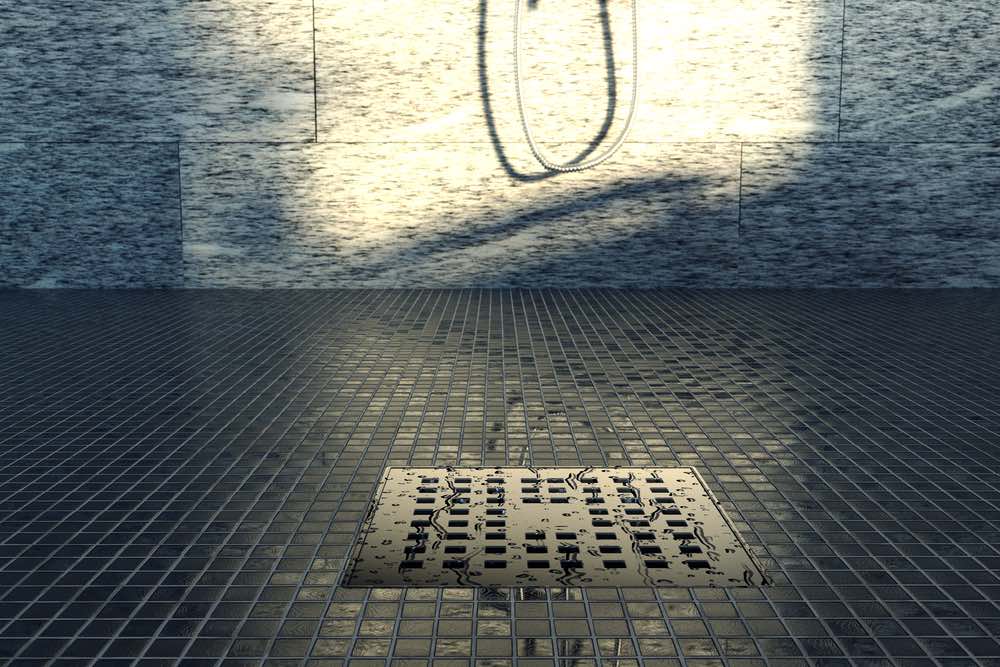5 Different Types of Shower Drains (With Pictures)
-

- Last updated:

While many people will mostly consider appearances while designing their showers, a properly functioning unit is more important. Unless you want to be standing in dirty water that’s quickly accumulating with nowhere to escape, a drain is one of the most essential components of your shower. But there are many shower drain assemblies, and they’re not all applicable to every situation. If you make the wrong choice, you could end up dealing with unwanted consequences, such as leaks that cause mold and mildew under your shower floor. It is an expensive fix that’s better avoided by using the proper drain.
We’ve broken this article into the two following sections:
The Two Main Types of Shower Drains
There are several types of shower drains, but they fall into two main categories: point drains and linear drains. Both are equally effective at draining water from your shower, but they look and function differently. They’re also placed in different areas of the shower, so the shower floor must be designed around the drain placement.
1. Point Drains

Point drains are the most common type of shower drain that all of us should be familiar with. They are small drains that usually sit in the center of the shower floor. The floor must be sloped towards this drain from all directions to ensure the water drains adequately. These are often rounded, though you can also get square-topped ones that will likely fit better with square tiles. Point drains are small and inexpensive, but they still provide plenty of drainage for any shower.
Because the floor must be sloped from all directions with a point drain, you’ll be more limited with the tiles you can use. Generally, you’ll need to stick with smaller tiles to work with the slope. This drain is used in showers with a curb, and it’s not the best option for curbless showers.
- Inexpensive
- Very common
- Can get them with round or square grills
- Not a good choice for curbless showers
- Doesn’t work well with large tiles
2. Linear Drains

A linear drain is a long rectangular drain that will span the width of an entire wall of your shower. It’s generally placed directly against the wall, and the whole floor slopes in one direction towards the drain. This means you have more freedom with tiles because the slope only moves in one direction. Large tiles work well with linear drains, but smaller ones also work great. Linear drains are ideal for a curbless shower since the whole floor can slope away from the opening, and water won’t drain out of the shower and into the bathroom.
- Works great for curbless showers
- Can use large tiles
- Floor only slopes in one direction
- More expensive than point drains
 Drains for Different Types of Shower Floors
Drains for Different Types of Shower Floors
We’ve discussed the two main categories that shower drains fall into. Within these categories, there are a few types of drains to pick between. The one you should choose depends on the type of floor your shower has and the type of floor it’s built on. The following three drains are point drains that are intended for specific circumstances.
3. Three-Piece Drain
When building a shower on a wood floor, such as on the second story of a house, a shower liner must be used to protect the wood beneath from any water that could cause mold, mildew, and rot. A three-piece drain is meant for installing a tiled shower floor on a shower pan or pan liner on top of a wooden subfloor.
The bottom piece goes into the drainpipe directly on the wooden subfloor. The middle piece goes over the shower pan or liner, and the final piece screws into the top with an adjustable height to match the tile you’ll be installing.
4. One-Piece Drain
This is the simplest type of drain to install since there are so few pieces. It’s meant for showers with tile floors that are built on top of concrete. It’s not a big deal if the concrete gets wet, so they don’t have to be as robust. A one-piece drain simply screws into the waiting drainpipe below, so the top of the drain is just under the top of the tile. A strainer is then screwed on top of the drain.
5. Multipiece Shower Drain
Multipiece shower drains have the most parts, but they’re installed on the simplest shower floors. These are used with one-piece shower stalls and pre-molded shower bases. Most parts go below the shower floor, installed to the drainpipe on the subfloor. Then the shower base is added on top, and the threaded drain body is screwed into the waiting flange below.
Conclusion
While there are several types of shower drains available, they fall into two main categories. Point drains are the most common type of round shower drains that are present in most showers. They’re typically installed in the center of the shower, with the floor sloping in from all directions. Linear drains, on the other hand, are long and rectangular and installed against one of the walls of the shower, usually spanning the whole length of that wall. They are less common than point drains, but you’ll always see them used in curbless showers.
Featured Image Credit: Brilliant Eye, Shutterstock
Contents

 Drains for Different Types of Shower Floors
Drains for Different Types of Shower Floors


